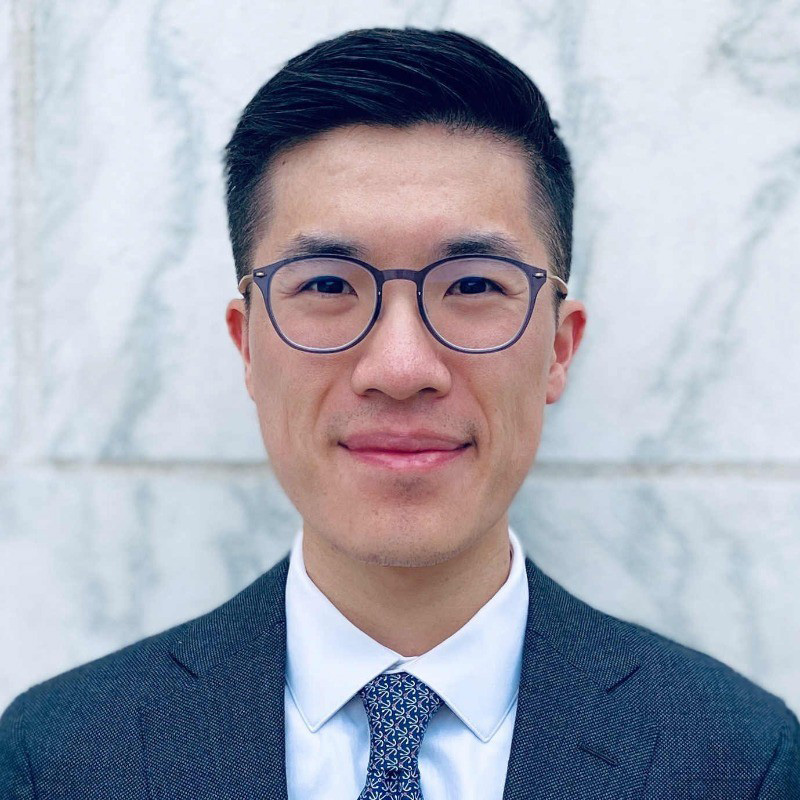Key takeaways
- Inflammaging is a chronic, low-grade inflammation that accelerates aging and increases the risk of diseases such as heart disease, dementia, and osteoporosis.
- Key contributors include senescent cells, gut dysbiosis, and poor lifestyle habits, making inflammation both measurable and modifiable.
- You can slow inflammaging through anti-inflammatory habits, such as a Mediterranean-style diet, regular exercise, stress reduction, quality sleep, and targeted therapies.
Overview
Many people find themselves feeling older than their years. Stiff joints, unexplained fatigue, cognitive fog, and a growing susceptibility to illnesses are often written off as inevitable signs of aging. But what if aging isn’t the sole culprit?
Scientific insights reveal that a silent process, known as inflammaging, could be accelerating the ticking of your biological clock. This low-grade, chronic inflammatory state is a key driver of age-related decline. From an evolutionary perspective, inflammaging may have developed as a trade-off, where immune system changes that once protected us in early life now contribute to chronic inflammation and aging in later years.
However, here is the good news: Understanding inflammaging empowers you to take proactive steps to slow this process and extend not only your lifespan but also your healthspan. This blog offers a deep examination of inflammaging, from its cellular mechanisms to actionable solutions, to help you age more gracefully and vibrantly.
What is inflammaging?
Inflammaging, a term coined by scientists over two decades ago, combines the concepts of “inflammation” and “aging.” It describes the persistent, low-grade inflammation that accompanies the aging process. Inflammaging is now recognized as a key feature of human aging, influencing biological mechanisms and contributing to the decline in health and increased risk of disease as individuals age.
Unlike the acute inflammation that helps your body recover from injuries or infections, inflammaging is a slow-burning but systemic condition that can set the stage for numerous aging-associated diseases.
Inflammaging is characterized by systemic inflammation without an apparent external trigger. Fundamental to this process is the imbalance between pro-inflammatory and anti-inflammatory responses as we age. Chronic inflammation, once thought to be a side effect of aging, is now acknowledged as a key driver of biological aging.
Key inflammatory markers
Inflammaging is measurable through specific biomarkers:
- C-reactive protein (CRP): A standard indicator of systemic inflammation.
- Interleukin-6 (IL-6): It plays a role in inflammation and immune responses; its elevated levels are a hallmark of inflammaging.
- Tumor necrosis factor-alpha (TNF-α): A cytokine linked to cellular damage and immune dysregulation.
Recent advances even allow scientists to use tools like the iAge inflammatory clock, which predicts biological age based on inflammatory markers.
How does inflammaging damage your body?
Over time, unmanaged inflammaging contributes to the gradual deterioration of tissues and organ systems, increasing the risk of disease or dysfunction. Here’s how it impacts key physiological domains:
Cardiovascular health and cardiovascular disease
Chronic inflammation accelerates processes like atherosclerosis, where arterial walls thicken due to plaque buildup. Endothelial dysfunction, which involves vascular endothelial cells, impairs the protective barrier of blood vessels, triggering inflammatory pathways that promote plaque formation and the progression of atherosclerosis.
Vascular smooth muscle cells play a key role in maintaining vascular integrity, and their dysfunction contributes to the destabilization of plaques and the development of cardiovascular diseases.
This increases the risk of heart diseases and stroke, as inflammaging promotes acute vascular occlusion and myocardial infarction through plaque rupture and thrombosis, making inflammation a hidden but major contributor to cardiovascular mortality.
Cognitive function
Neuroinflammation, caused by elevated levels of inflammatory cytokines, can compromise the integrity of the blood-brain barrier. Age-related changes in the extracellular matrix can disrupt neural tissue structure, contributing to neurodegeneration and cognitive decline. This accelerates cognitive decline and elevates the risk of conditions like Alzheimer’s disease and dementia.
Muscles and bones
Inflammatory mediators hinder muscle protein synthesis, escalating muscle loss (sarcopenia) and contributing to frailty. Changes in growth factors, driven by inflammaging, impair muscle repair and bone remodeling, further exacerbating tissue deterioration. Simultaneously, inflammaging reduces bone density, increasing the likelihood of osteoporosis and fractures.
The root causes of inflammaging
The origins of inflammaging are multi-faceted, involving changes at cellular, systemic, and environmental levels. Age-related alterations in innate immune responses and immune systems contribute to chronic inflammation as the regulation of inflammatory processes becomes impaired.
Aging also skews hematopoiesis toward increased production of myeloid cells, which impacts the immune response and promotes inflammaging. Additionally, stem cells play a crucial role in maintaining immune system health, and dysfunction or aging of these stem cells can further drive immune dysregulation and inflammaging. Here are some of the primary drivers:
- Cellular senescence and oxidative stress
Cell senescence, often referred to as “zombie cells,” refers to cells that cease dividing yet remain metabolically active. Cell senescence is characterized by cell cycle arrest and a persistent DNA damage response, both of which sustain the pro-inflammatory state of these cells. These senescent cells release inflammatory molecules collectively known as the senescence-associated secretory phenotype (SASP), perpetuating chronic inflammation.
- Gut microbiome dysregulation
Age-related changes in gut microbiota can compromise the gut barrier (leading to a “leaky gut”), allowing microbial byproducts to enter the bloodstream and fuel inflammation.
Microbial byproducts, including pathogen-associated molecular patterns (PAMPs), can activate immune receptors and fuel systemic inflammation.
- Lifestyle and environmental factors
Modern living exacerbates inflammaging:
- Diet: Consuming processed and high-sugar foods increases oxidative stress, which in turn leads to cellular and molecular damage, ultimately driving chronic inflammation.
- Physical inactivity: A sedentary lifestyle correlates with increased inflammatory markers.
- Stress: Persistent stress elevates cortisol levels, exacerbating inflammatory pathways.
- Poor sleep: Sleep disturbances disrupt immune regulation, amplifying inflammation.
The role of cell death in inflammaging
Cell death is a fundamental process in the human body, playing a pivotal role in the development and progression of inflammaging, a state of chronic inflammation that accelerates the aging process. As we age, the balance between healthy cell turnover and the accumulation of damaged or dysfunctional cells becomes disrupted, contributing to the onset of age-associated diseases and chronic conditions.
How does programmed cell death contribute to chronic inflammation?
Programmed cell death, such as apoptosis, is essential for removing cells that are damaged, no longer needed, or potentially harmful to the organism. However, when cells die, they can release molecules known as damage-associated molecular patterns (DAMPs).
These DAMPs are recognized by pattern recognition receptors (PRRs) on immune cells, triggering immune responses that include the production of inflammatory cytokines, such as interleukin-6 (IL-6) and tumor necrosis factor (TNF). This process recruits additional immune cells, such as T cells and macrophages, to the site of cell death, amplifying the inflammatory response.
Over time, repeated or excessive activation of these immune responses can lead to chronic inflammation. The persistent presence of inflammatory mediators and inflammatory cells in tissues creates a cycle of ongoing tissue damage and repair, which is a hallmark of inflammaging.
This chronic inflammatory environment not only impairs immune system function but also increases the risk of developing age-related chronic diseases, including cardiovascular disease, rheumatoid arthritis, and chronic kidney disease.
Apoptosis, necroptosis, and their impact on aging tissues
Different forms of cell death have distinct effects on aging tissues. Apoptosis, often referred to as “programmed cell death,” is a tightly regulated process that helps maintain tissue health by eliminating cells that are damaged or have reached the end of their functional lifespan.
While apoptosis is generally non-inflammatory, excessive or dysregulated apoptosis can deplete essential cellular components, weaken tissue integrity, and contribute to the progression of aging-related diseases.
Necroptosis, on the other hand, is a form of programmed necrosis that is inherently pro-inflammatory. When necroptosis occurs, it leads to the release of cellular contents that act as inflammatory factors, further stimulating the immune system and promoting the production of inflammatory cytokines. This can exacerbate systemic inflammation and accelerate the development of age-associated diseases such as coronary artery disease and cognitive decline.
The interplay between apoptosis, necroptosis, and other forms of cell death is critical for maintaining tissue homeostasis. An imbalance, whether due to increased cell death or impaired clearance of dead cells, can drive the accumulation of senescent cells and the activation of the senescence-associated secretory phenotype (SASP), further fueling chronic inflammation and the aging process.
The immune system plays a central role in maintaining this balance. Immune cells, including dendritic cells, T cells, and B cells, are responsible for recognizing and clearing dead or dying cells. When this process is compromised, as often occurs with aging, the resulting buildup of cellular debris and inflammatory molecules can perpetuate systemic inflammation and increase the risk of adverse health outcomes.
By targeting the pathways that regulate cell death, immune responses, and inflammatory mediators, scientists hope to develop new strategies for promoting healthy aging and reducing the burden of age-related chronic diseases.
Strategies to manage inflammaging
The science doesn’t just illuminate the problem; it also provides avenues for mitigating inflammaging through lifestyle changes and emerging interventions. Exercise, for example, acts as a natural anti-inflammatory agent, helping to reduce chronic inflammation associated with the aging process. Additionally, interventions that target energy metabolism, such as those that improve the balance between glycolysis and oxidative phosphorylation, can help reduce inflammaging and support healthier aging.
- Anti-inflammatory nutrition
Your diet is one of the most powerful tools for lowering chronic inflammation:
- Prioritize the Mediterranean diet, rich in fruits, vegetables, nuts, olive oil, and fish. Its anti-inflammatory properties combat oxidative stress and inflammation. Anti-inflammatory diets can also help reduce insulin resistance, a key contributor to inflammaging and metabolic dysfunction.
- Incorporate omega-3 fatty acids from sources like salmon and flaxseeds, which suppress the production of inflammatory cytokines.
- Include antioxidant-rich foods like turmeric (curcumin), green tea, and berries for their potent anti-inflammatory polyphenols.
- Regular exercise
Physical activity is medicine for inflammaging. Regular exercise has a positive influence on the function and abundance of circulating cells, which play a crucial role in regulating inflammation.
Studies show that aerobic and resistance exercise reduces levels of CRP and IL-6 while enhancing immune function. Aim for at least 150 minutes of moderate activity per week.
- Stress reduction and sleep hygiene
- Engage in stress management techniques, such as meditation, yoga, or deep-breathing exercises, to lower cortisol and inflammatory markers.
- Ensure 7–9 hours of high-quality sleep nightly. Address issues like sleep apnea, which are associated with increased inflammation.
Emerging therapies for inflammaging
Beyond lifestyle changes, groundbreaking therapies are being developed to slow or even reverse inflammaging at its root. Many of these emerging therapies are being designed to prevent or treat chronic disease, as persistent, low-grade inflammation is closely linked to the onset and progression of conditions such as cardiovascular disease, diabetes, and cancer.
- Senolytics
Senolytic drugs, such as Dasatinib and Quercetin, target and eliminate senescent cells, thereby reducing SASP-mediated inflammation. While still in early testing, they are a promising frontier in combating inflammaging.
- Microbiome-targeted treatments
Probiotics and prebiotics promote gut health and reduce systemic inflammation. Advanced options, such as fecal microbiota transplantation (FMT), are being explored to rejuvenate aging microbiomes.
- Nutritional supplements
Key supplements that show promise include:
- Curcumin: Curbs inflammation by inhibiting nuclear factor-kappa B (NF-kB) signaling.
- Vitamin D: Modulates immune responses, with deficiencies linked to higher inflammatory markers.
- Zinc and omega-3s: Both support cellular repair and lower systemic inflammation.
- Antioxidant-rich foods or supplements: These compounds help neutralize reactive oxygen species (ROS), which contribute to inflammaging by promoting cellular senescence, mitochondrial dysfunction, and activation of inflammatory pathways.
Bottom line
Inflammaging is not an inevitable, irreversible process. If left unchecked, inflammaging can lead to accelerated aging and increase the risk of age-related diseases.
By understanding its mechanisms and taking proactive steps, including dietary modifications, exercise, stress management, and emerging therapies, you can significantly enhance both the quality and length of your life.
Are you ready to combat inflammaging? Start by evaluating your lifestyle and making intentional choices today. Small, consistent actions can yield profound anti-aging results.
Frequently asked questions (FAQs)
- At what age does inflammaging typically begin?
Inflammaging can start as early as the 20s to 30s, but becomes more pronounced after age 50. The process is gradual and varies significantly among individuals, depending on their genetics and lifestyle factors.
- Can inflammaging be completely reversed?
While some inflammatory damage may be permanent, research indicates that lifestyle interventions can significantly reduce inflammatory markers and slow the process of inflammaging. The earlier you start, the more effective the interventions.
- What blood tests can detect inflammaging?
Common inflammatory markers include C-reactive protein (CRP), interleukin-6 (IL-6), and tumor necrosis factor-alpha (TNF-α). Your doctor can order these tests along with a complete metabolic panel to assess inflammation levels.
- How long does it take to see results from anti-inflammaging interventions?
Some inflammatory markers can improve within 2-4 weeks of dietary changes or increased exercise, but significant anti-aging benefits typically require 3-6 months of consistent lifestyle modifications.
- Are supplements necessary to fight inflammaging?
While a well-balanced diet should provide most nutrients, certain supplements like omega-3s, vitamin D, and curcumin may provide additional anti-inflammatory benefits, especially if you have deficiencies or higher inflammation levels.
- How does inflammaging affect immune cell populations?
Inflammaging leads to an accumulation of memory T cells, effector memory T cells, and CD8 T cells in aged tissues. These changes are associated with T cell senescence, which impairs immune function and contributes to chronic inflammation and immune dysfunction as we age.
References
- Monti, D., Ostan, R., Borelli, V., Castellani, G., & Franceschi, C. (2017). Inflammaging and human longevity in the omics era. Mechanisms of Ageing and Development, 165, 129-138.
- Franceschi, C., Garagnani, P., Parini, P., Giuliani, C., & Santoro, A. (2018). Inflammaging: a new immune–metabolic viewpoint for age-related diseases. Nature Reviews Endocrinology, 14, 576-590.
- Li, X., Li, C., Zhang, W., Wang, Y., Qian, P., & Huang, H. (2023). Inflammation and aging: signaling pathways and intervention therapies. Signal Transduction and Targeted Therapy, 8, 239.
- Dugan, B., Conway, J., & Duggal, N.A. (2023). Inflammaging as a target for healthy ageing. Age and Ageing, 52(2), afac328.









